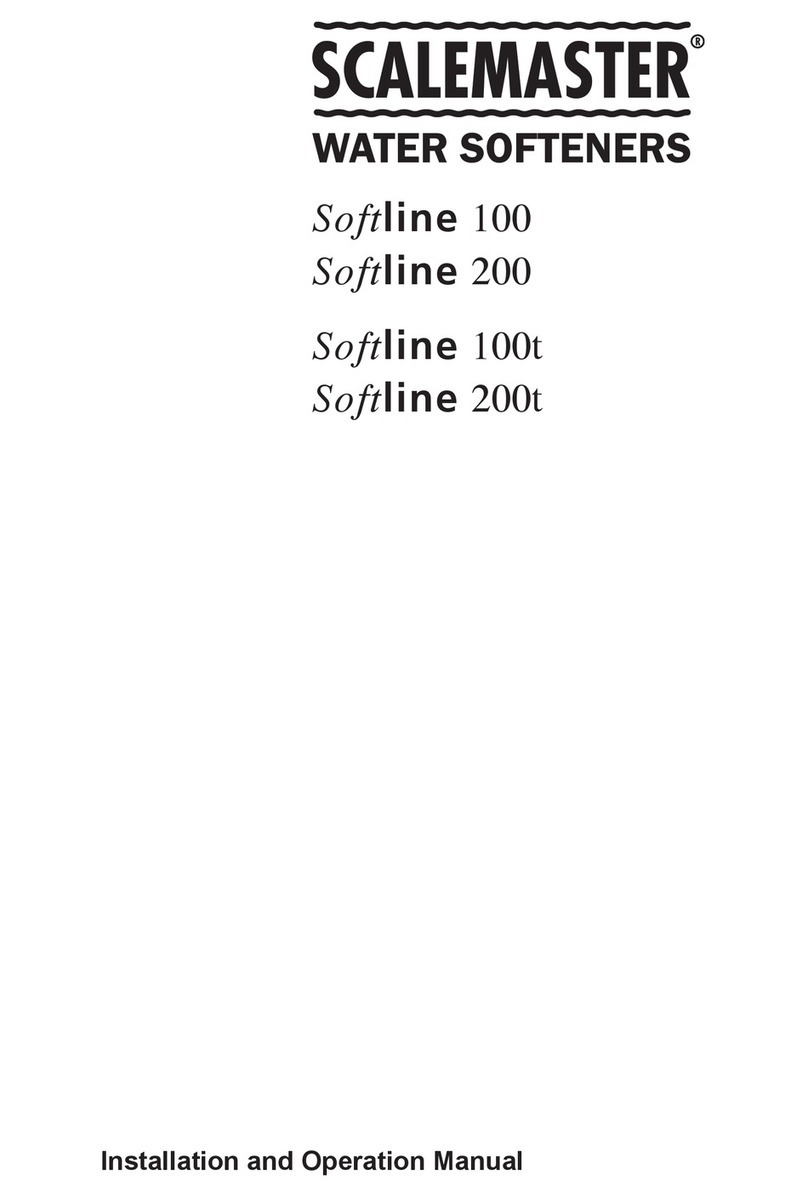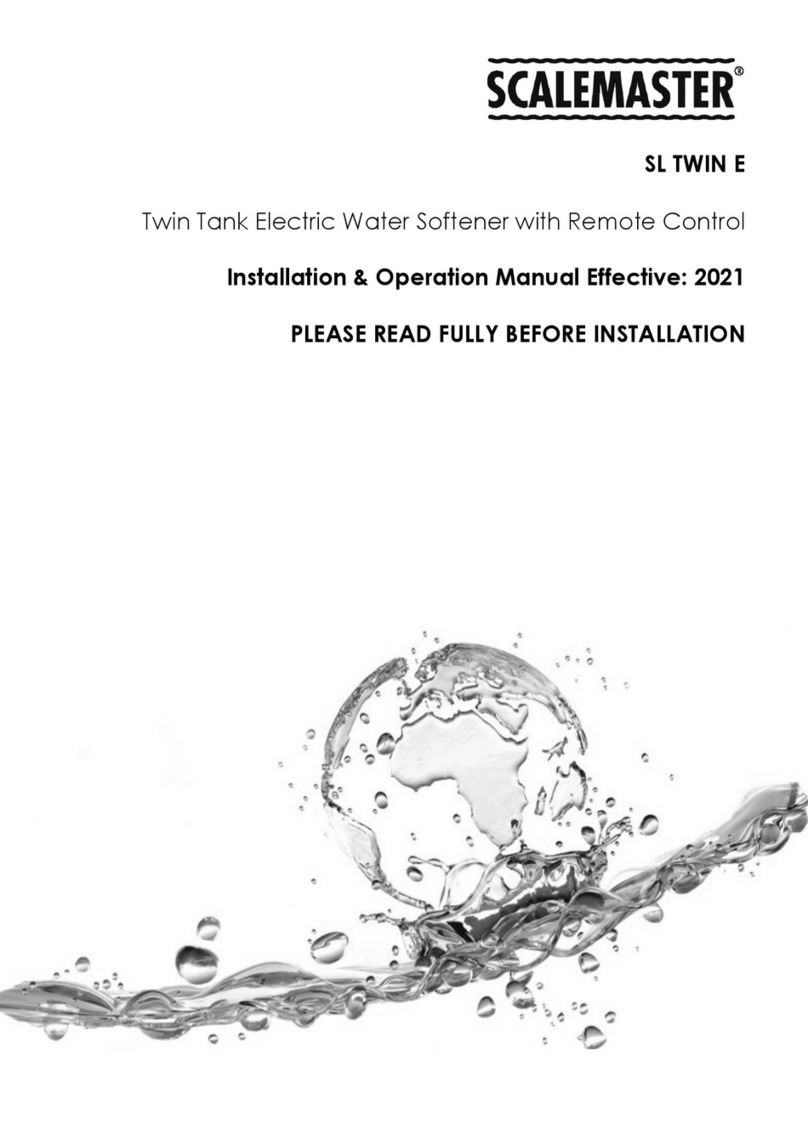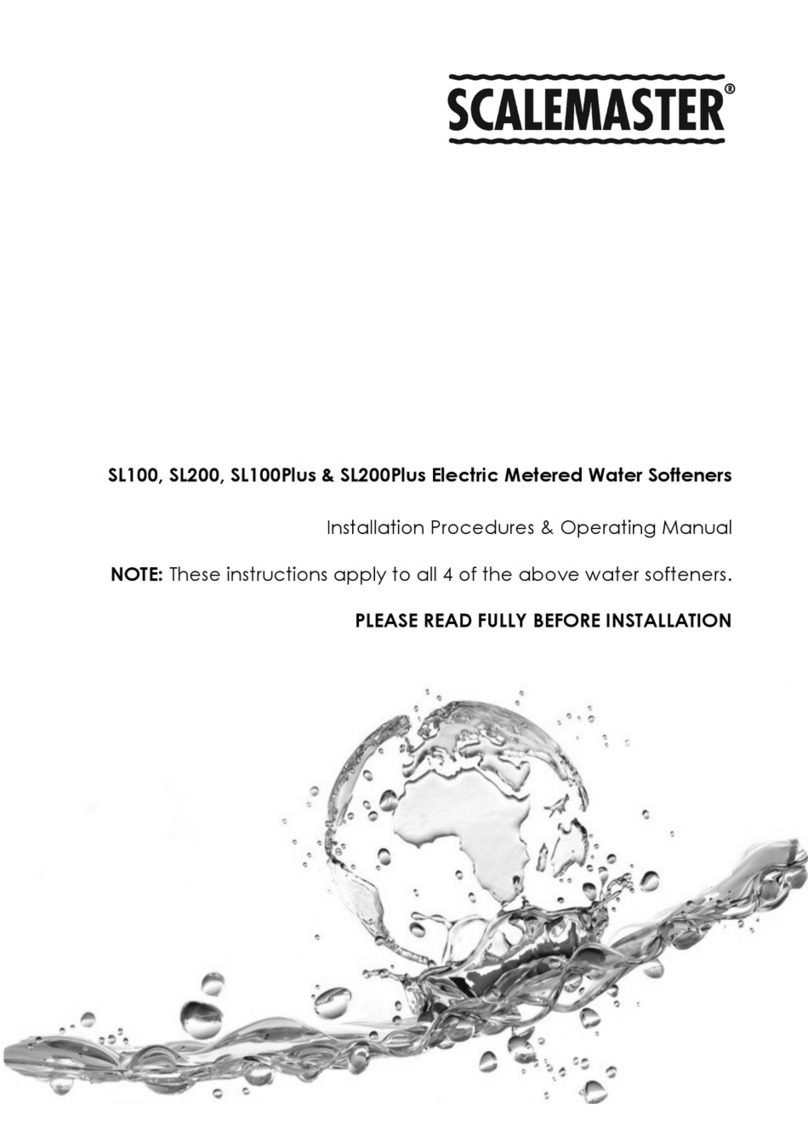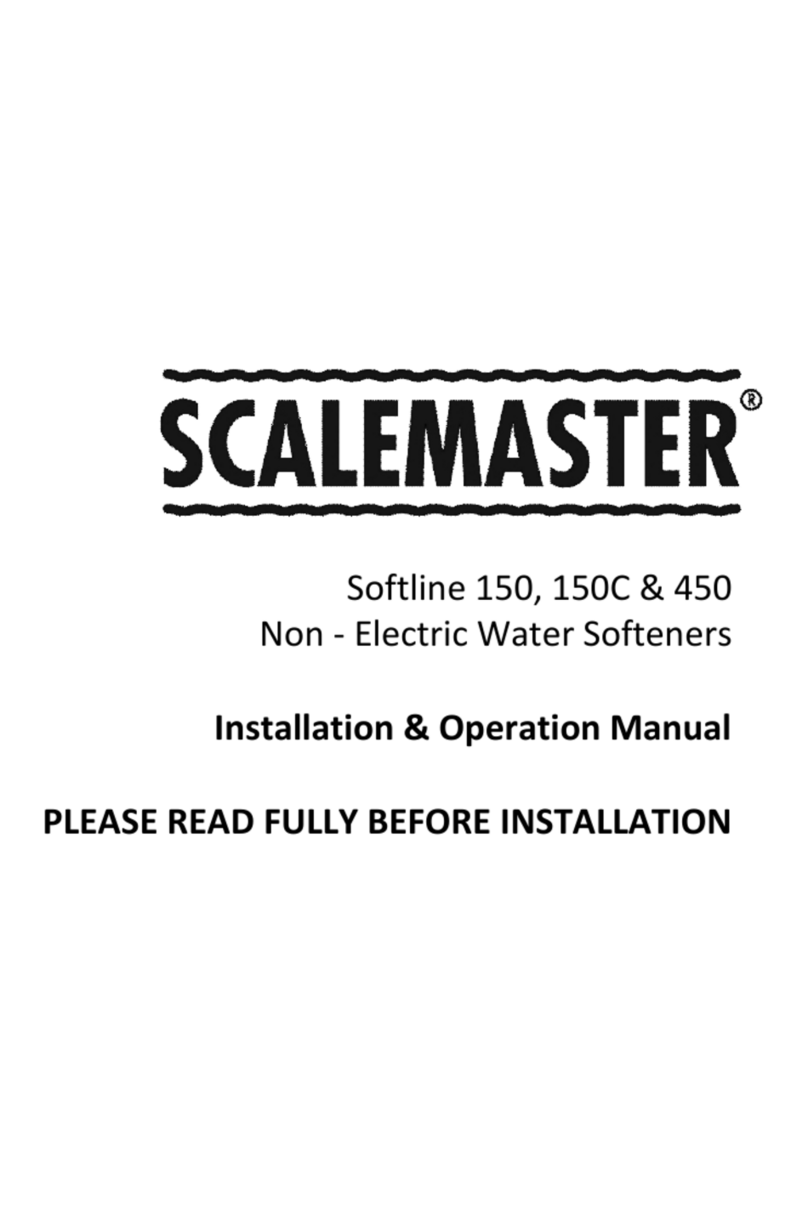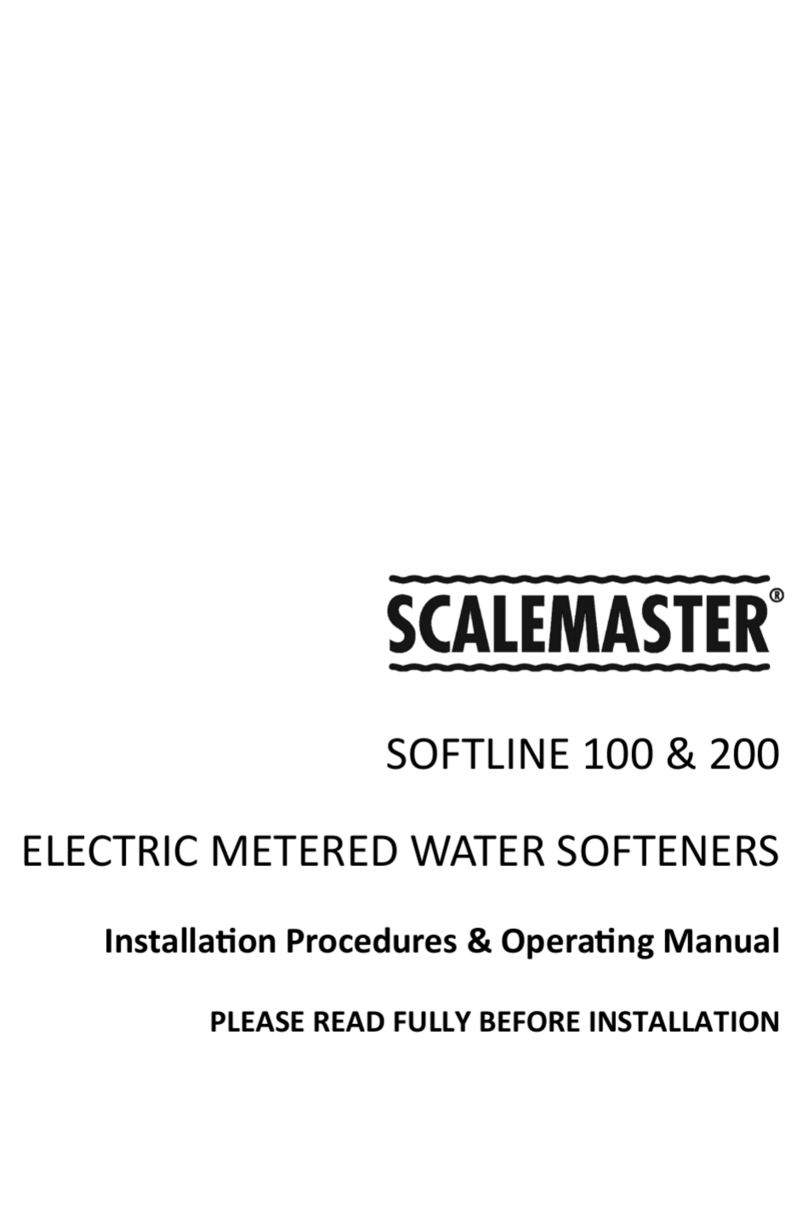2
Thank you for choosing a Softline Non Electric Water Softener.
It is important that you take the time to read this installation guide. It will tell you in a simple
format how to install your Water Softener and how to start enjoying the benefits of
softened water.
This instruction manual applies to the SL150, SL150 Mini & SL450 models only.
1. Introduction.
The SL Non-Electric range of Water Softeners from Scalemaster present a new approach to
the world of water softeners. Based on proven technology, Because these softeners are
non-electric there are no issues relating to electrical installation compliance. These units
are still fully automatic. The units operate purely through the hydraulic pressure of the
incoming water whether that be from the mains or from a well. Scalemaster non-electric
water softeners have no motors and no wires, they just do not need them! The moving
parts are operated by dynamic water pressure above 1 bar (dynamic).
Scalemaster SL Water Softeners are one of the most efficient water softeners on the
market. For example, through it’s advanced technology, the SL150 version typically uses
only 330 grams of salt and 18 litres of water for every regeneration making it one of the
most environmentally friendly water softeners on the market today. Water usage is less
than 4% per regeneration which meets the minimum performance requirements of the
Code for Sustainable Homes published by the Buildings Research Establishment.
2. Features & Benefits.
• NON-ELECTRIC: The 150 & 450 range work entirely without electricity.
• EASE OF INSTALLATION: Far simpler than standard water softeners to install due to the
simple and unique ‘clip-connect’ design and integrated bypass manifold.
• COMPACT DESIGN: The SL150 is designed to fit into a standard kitchen cabinet and
other areas where space is at a premium.
• MINIMAL PROGRAMMING: Just set the water hardness for your area.
• ENVIRONMENTALLY FRIENDLY: Designed to use minimal salt & water during regenera-
tion.
• HIGH TEST STANDARDS: The units are all ‘wet tested’ before leaving the factory.
• HIGH FLOW RATES: Nominal flow rate (1 bar loss of pressure) 25 litres per minute (1500
litres per hour).
DID YOU KNOW?
The salt used in a water softener is not used to soften the water, it’s used
as part of the cleaning process (regeneration) that the softener will go
through periodically.






